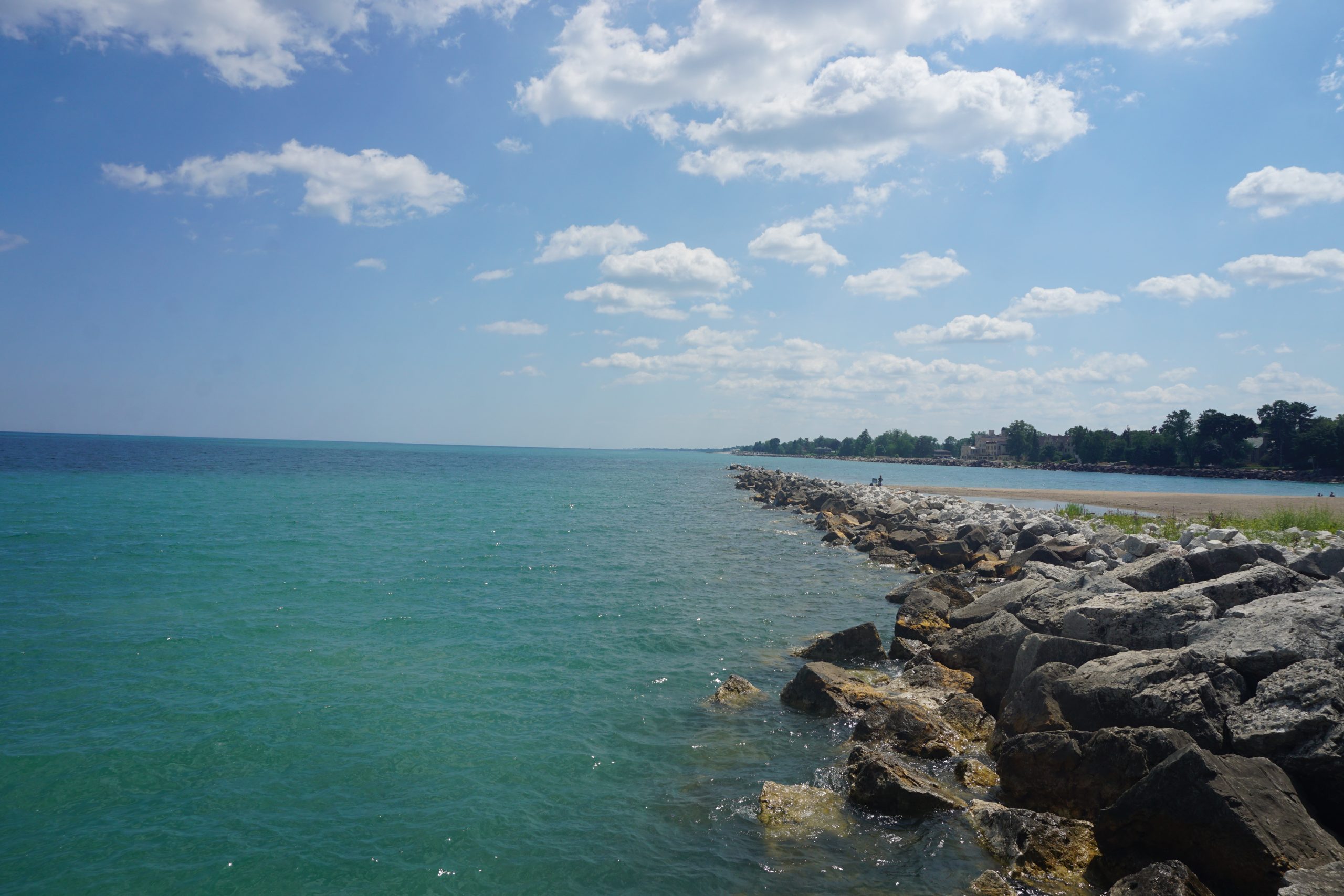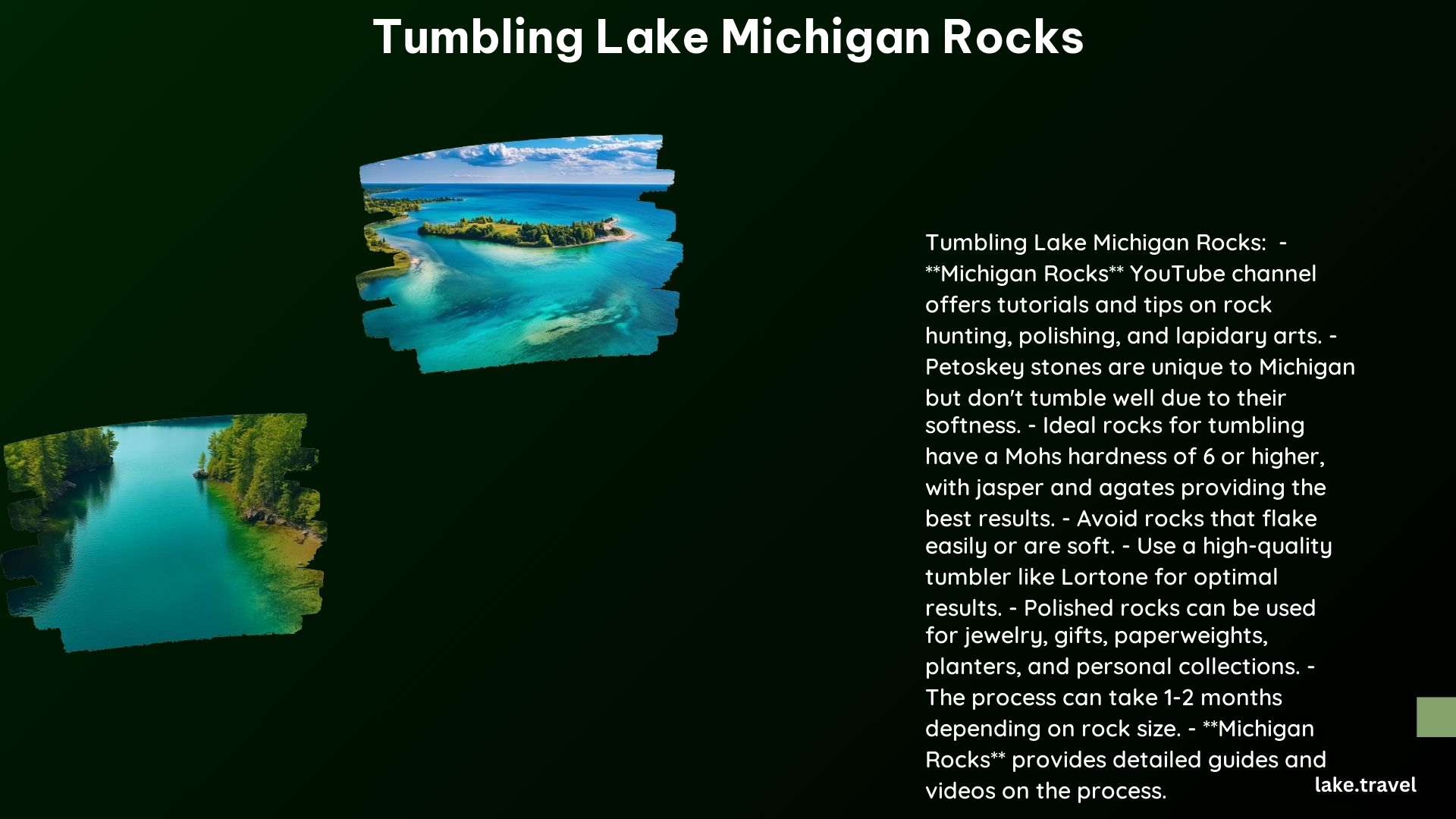Tumbling Lake Michigan rocks is a captivating hobby that transforms ordinary stones into stunning, polished gems. For lakes touring enthusiasts and tour planners, understanding the best practices and techniques for tumbling these unique rocks is crucial. This guide provides detailed information on the optimal grit to start with, the ideal tumbling duration, and the types of rocks suitable for this process.
Best Grit to Start With

When it comes to tumbling Lake Michigan rocks, the right grit sequence is essential for achieving the desired results. The most commonly recommended grit sequence is as follows:
- Coarse Grit (80-100): This initial stage helps remove any rough edges and shapes the rock.
- Medium Grit (220-240): This stage smooths out the rock’s surface, removing any scratches from the coarse grit.
- Fine Grit (400-600): This stage polishes the rock, revealing its natural colors and patterns.
- Extra Fine Grit (1200-1500): This final stage produces a high-gloss finish.
Tumbling Duration

The tumbling duration for Lake Michigan rocks can vary depending on the size and type of rock. Generally, it can take anywhere from one to two months to achieve a smooth finish. Here’s a rough estimate of the tumbling duration for each stage:
| Stage | Duration |
|---|---|
| Coarse Grit | 1-2 weeks |
| Medium Grit | 2-3 weeks |
| Fine Grit | 3-4 weeks |
| Extra Fine Grit | 1-2 weeks |
Suitable Rocks for Tumbling
Not all rocks from Lake Michigan are suitable for tumbling. The best rocks for this process are those with a Mohs hardness of 6 or higher, as they can withstand the tumbling process. Some popular types of rocks from Lake Michigan that are suitable for tumbling include:
- Agates: Known for their vibrant colors and patterns, agates are a popular choice for tumbling.
- Jaspers: Jaspers are another popular type of rock that can produce stunning results after tumbling.
- Petrified Wood: Petrified wood can also be tumbled, but it requires special care and attention.
It’s important to avoid softer rocks, such as Petoskey stones, as they may not withstand the tumbling process and may not produce the desired results.
Additional Tips and Resources
To enhance your tumbling experience and achieve the best results, consider the following tips and resources:
- Watch Tutorials: Michigan Rocks on YouTube provides excellent tutorials and tips for tumbling Lake Michigan rocks.
- Invest in a Good Tumbler: Brands like Lortone are highly recommended for producing high-quality results.
- Avoid Soft Rocks: Rocks like Petoskey stones are too soft for tumbling and may not produce the desired results.
References
- Michigan Rocks – YouTube: A comprehensive resource for rock hunting, rock polishing, and lapidary arts.
- Tumbling Michigan Beach Rocks from 2020 (Part 1) – YouTube: A video showcasing the tumbling process and results.
- Polishing Rocks from The Great Lakes – 99.1 WFMK: An article discussing the process and benefits of polishing Great Lakes rocks.
Tumbling Lake Michigan rocks is a captivating hobby that can transform ordinary stones into stunning, polished gems. By understanding the best grit to start with, the ideal tumbling duration, and the types of rocks suitable for this process, lakes touring enthusiasts and tour planners can enhance their exploration and appreciation of these unique natural wonders.
